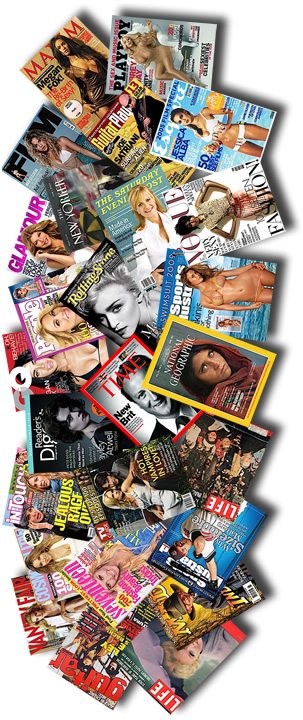This blog is provided via Print Media Center and Deborah Corn. Deborah set me up with a press pass for the Henry Stewart Event DAM NY May 1-2, 2014 in NYC, and for that I am thankful – and hopefully you will be too. The Print Media Centr community was also able to follow the event minute by minute as I was live tweeting (is there any other way??) – who said Twitter is on it last days!!!! Many of the the 140 characters messages I tweeted reached as far as London, England, that is really cool! Now on to the post!
Digital Asset Management or DAM is a very active expanding and revenue driven vertical and based on the two-day event held in New York City the need for enterprises to have a DAM is growing exponentially.
For me, a guy involved in the print field for a while, the needs of DAM expressed at the event are 1000 times more expansive then any print DAM I ever saw. Now having said that I did not work with catalog and magazines, but in the end I would say that the DAM explained at the event was on steroids and loaded with caffeine, as it seems were many of the presenters (Caffeine at least).
So, what did I learn and can share with you? I stole this line from Ellen Payne of Hearst who stated she stole it from some unidentified vendor last year at the 10th annual DAMNY event.
Simply the key take-a-ways are: Rights, Reuse and Revenue.
Well that is it, done great and thanks for your time, blog over! Just foolin’…
DAM, runs on these three deliverables:
 Rights. If you are selling, merchandising, renting or leasing property (TV, media and publishing, art, content, or etc.) you need to have access not only to the images but to the rights of that image or media. Miles Rohan stated that at Nickelodeon, where he is the Senior Director of (off-air) Digital Asset Management, rights, ownership are in many cases more important than the image or property. Nick (I know the network well enough to use its first name) was undergoing a conversion from an old and dated DAM to a new and more exciting useful and effective DAM. Key to the new DAM was the ability to find an image, any image from any show, promotion piece or other media and be able immediately to “sell” the images based on the rights and understand clearly who shared in the revenue. Nick has over 300,000 assets, including Adobe Illustrator and Photoshop (50%), PDF’s (20%), PPT, Word and Excel documents (20%) and other. Movie, QT etc, (10%).
Rights. If you are selling, merchandising, renting or leasing property (TV, media and publishing, art, content, or etc.) you need to have access not only to the images but to the rights of that image or media. Miles Rohan stated that at Nickelodeon, where he is the Senior Director of (off-air) Digital Asset Management, rights, ownership are in many cases more important than the image or property. Nick (I know the network well enough to use its first name) was undergoing a conversion from an old and dated DAM to a new and more exciting useful and effective DAM. Key to the new DAM was the ability to find an image, any image from any show, promotion piece or other media and be able immediately to “sell” the images based on the rights and understand clearly who shared in the revenue. Nick has over 300,000 assets, including Adobe Illustrator and Photoshop (50%), PDF’s (20%), PPT, Word and Excel documents (20%) and other. Movie, QT etc, (10%).
Nick needed to search, share and communicate with power users, needed to have the vendors integrated and update the DAM based on the ever changing market demand and added content.
BTW, the word of the day is TAXONOMY, and what a word it is. Check it out your self.
Taxonomy along with a content audit seems to provide the path or trial to consistent labeling which leads to an easier and more thorough search.
![]() Reuse. You have the ability to understand what the property can be used for and clearly define any conditions of use. For example, some very famous “stars” have limitations as to how close their image can be used in and out of a commercial break. A number of the presenters did state that contract for use can be as short as a few pages (no longer on the back the royalty check) to upwards of dozens of pages, clearly a lawyer driven process. Reuse is not always an external need. Internal uses to links for current stories and articles is why the New York Times develop its system, appropriately titled TimesMachine. Evan Sandhouse of the Times gave a very interesting and informative overview of the history of the New York Times archives (morgue to TimesMachine) and the current use. As mentioned the NYT includes links to the stored stories as needed to support current digital content.
Reuse. You have the ability to understand what the property can be used for and clearly define any conditions of use. For example, some very famous “stars” have limitations as to how close their image can be used in and out of a commercial break. A number of the presenters did state that contract for use can be as short as a few pages (no longer on the back the royalty check) to upwards of dozens of pages, clearly a lawyer driven process. Reuse is not always an external need. Internal uses to links for current stories and articles is why the New York Times develop its system, appropriately titled TimesMachine. Evan Sandhouse of the Times gave a very interesting and informative overview of the history of the New York Times archives (morgue to TimesMachine) and the current use. As mentioned the NYT includes links to the stored stories as needed to support current digital content.
 Revenue. Yes, revenue, that is what is driving the business of DAM. Nearly every presenter, forum or panel member got to the revenue word within 60 seconds of a discussion. One of the presenters Edward Klaris, Senior Vice President Editorial and Rights Group Conde Nast explain how WIRED magazine lost millions when they ran a story titled ARGO, and when the film ARGO was released it made over $200 million and Conde Nast made $0.
Revenue. Yes, revenue, that is what is driving the business of DAM. Nearly every presenter, forum or panel member got to the revenue word within 60 seconds of a discussion. One of the presenters Edward Klaris, Senior Vice President Editorial and Rights Group Conde Nast explain how WIRED magazine lost millions when they ran a story titled ARGO, and when the film ARGO was released it made over $200 million and Conde Nast made $0.
Ellen of Hearst, who stated her desire for white wine and yoga as her stress reduction protocol to counter any negative DAM development, discussed the use of their DAM for editorial, sales and marketing purposes. Based on her presentation Hearst has a plan that includes a DAM for their 22 US titles, 300 international titles, 28 websites, 14 mobile platforms and over 150 apps, WHEW, that could be a lot of yoga and a lot of white wine!
Ellen linked the rights, reuse and revenue into her presentation, which as mentioned was excellent. My general observation was that this concept of reuse might save the publishing industry by providing revenue for properties that have little cost and seemingly high profit. But as Ellen and a few others mentioned, the concept of well-managed DAM as a profit center is what they all are leaning towards.
Waking around the exhibit area and asking a lot of questions proved the point, nearly every exhibitor mentioned ROI, revenue generation almost immediately, seems like I got the message.
The opening presentation at which a nice New York bagel based breakfast was offered was interesting as well as noisy. The speaker Tim Padilla, Senior Manager, Optimity Advisors explained the concept of CVI, which translates to Customer, Vendor and Integrator. This process seems to be the root for anyone considering a DAM and that fact was strongly supported by the panel members, very strongly supported by Jacki Guerra of A+E. She explained the switch from a traditional TV based network to a media services firm where the process of owning property is part of the business model.
So how does that allow work for print and printers, well think Rights, Reuse and Revenue.
Work that you may develop and you own may have value, it would take a content audit to figure that out, but I see the dawning of the age of “everything is stock” and the smart support service provider can make some money. That is one way to bring in the bucks, now here is the inside scoop.
Many attendees asked how they could or where they world find a vendor that they can rent a DAM, since their firm may be too small to develop a customized DAM. Printers handle prepress or premedia, store files, track files and know where they reside so why can’t the smart printer handle the DAM needs of their clients and make a commission on every time a property was sold. DAM’s are a process driven tool, you need to be able to find files, art, text, content, data that is recent and aged, sounds like a prepress archive to me. So think this out, can you as a print provider make the natural shift to installing and renting or leasing your profit based expanded DAM? DAM which as mentioned earlier is a print centric term and tool why not, DAM you!
It seems that many of those smaller firms DO NOT want to own a DAM they want to rent one, so do I see Rent-a-DAM in your future????
Overall, and despite the extensive rain, DAM NY was well worth the time. Thanks again to Deborah Corn for her insight to allow me to cover this event and present this summary to you all. I need to thank HP for a great lunch, snacks and all the coffee I could hold, Thanks HP!
Need some personal insight on a DAM, more details from the event, email me at thad.kubis@tifmc.org
Connect with Thad Kubis, Founder & Chief Integration Officer, The Institute For Media Convergence Web | LinkedIn | Twitter | Facebook












